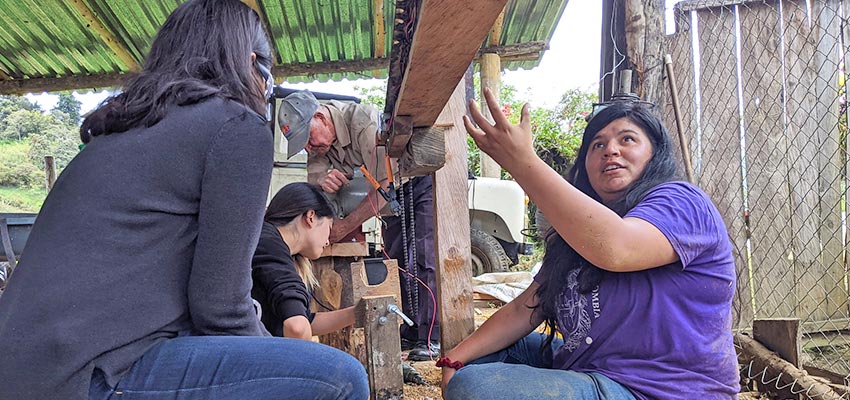
Getting there, getting started
At the start of MIT's Independent Activities Period in January, our D-Lab: Development team arrived in Bogota after two flights, totaling eight hours. Natalia Gutierrez and Juli Carolina Gomez, our trip leaders, who both work with D-Lab community partner C-Innova were already waiting for us at the airport and greeted us with a warm welcome. Natalia is a senior at Universidad Internacional studying Anthropology. Juli Carolina Gomez got her undergrad in Public Accounting at Universidad Internacional and is now pursuing an Environmental Studies Ph.D. at the same university. It was at Juli’s village where we would be staying for the next three weeks. The next day we spent exploring Bogota. We stayed en La Candelaria district and walked around to see the architecture and street art. We also went to the Botero Museum and Plaza Bolivar, where we saw people saw ants being sold as a snack. The following day, we started our journey to Garagoa.
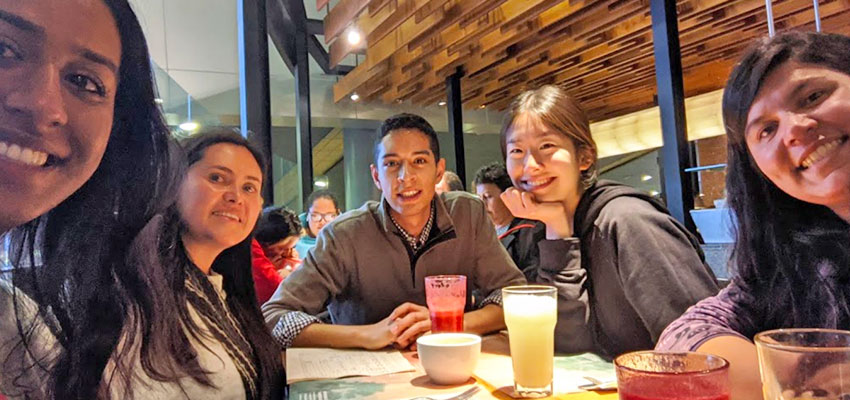
The journey
It took two bus rides: one from Bogota to Garagoa, and one from Garagoa to the village that we would be staying at. The trip was beautiful. We weaved through the mountains and drove past little towns. The whole journey took roughly five hours, and we were greeted with beautiful mountains with the sun shining beyond them. The village of San Antonio provided us with rich experiences through its scenic landscapes, tasty food, and inviting people. In hopes of sharing with them some of our prior knowledge and experiences, we ran two workshops focused on low-cost solar technologies. Our three-hour workshops consisted of a lecture-based introduction to electronics, a hands-on activity to get familiar with circuits, a soldering tutorial, and the main activity: the assembly of the solar-powered phone chargers. Both communities were fully engaged, and both communities followed-up with thoughtful questions at the end. Juaco, one of the facilitators of the workshop, delivered vendor/price information about solar-ready technologies relevant to the communities. Among these technologies were fridges and electric fencing for fields. The workshops happened on the 14th of January and were an overall success.
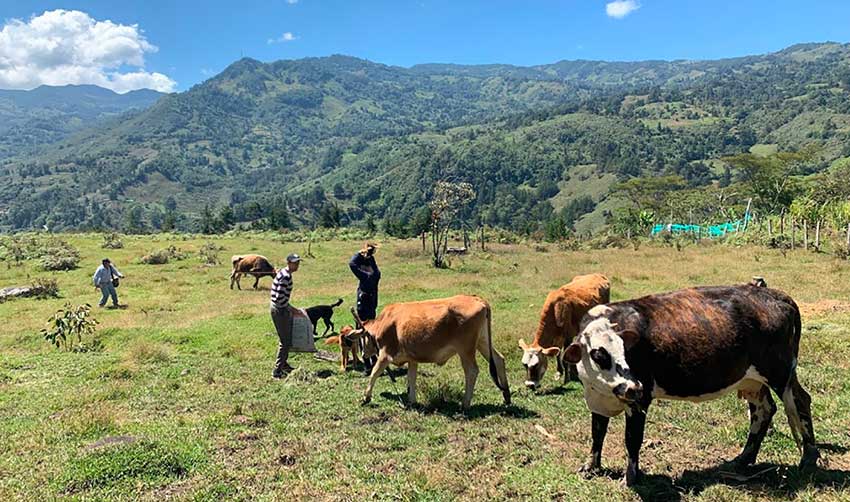
La Maquina
After we were exposed to the needs of the community members and life on the farm, the project our team chose to work on was a mesh-weaving machine to make fences. The purpose of this machine is to make mesh using wire to fence off areas of the farm. This fence was then intended to be used for a system known as “agroecology,” which promotes increased self-sustainability for farmers, reducing their dependence on outside resources. When we arrived, a version of the machine already existed, but it utilized a manual crank system and had a very high error rate. It required two to three people to run the machine and took about an hour to make just one meter of fence. Our goal was to automate the machine using a motor and reduce the error rate to make the process more efficient and bring down the number of workers required to run it.
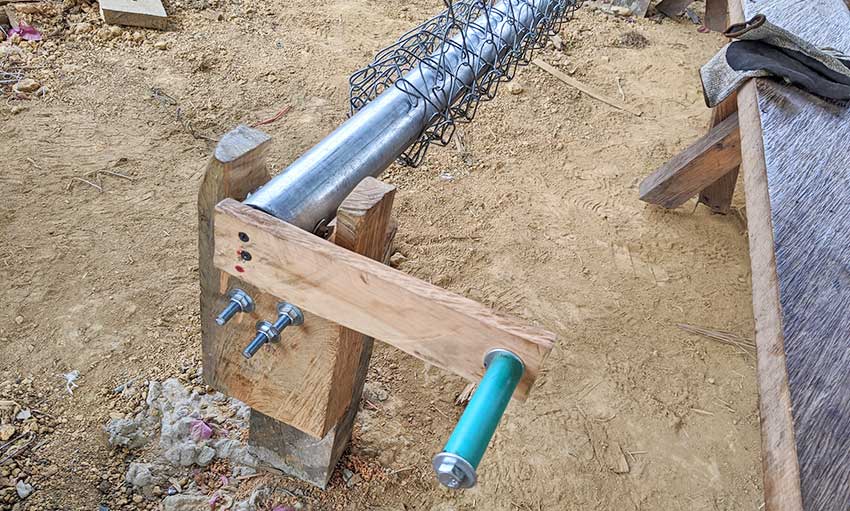
Design process
After making a decision on the technology, we spent a few days brainstorming with community members on how to improve the machine. We learned about the issues with the current design and made models of possible solutions using soft materials available on the farm, such as cardboard and wood. Then we discussed the pros and cons of the possible solutions and decided which parts would be best to implement. Finally, we solidified a list of necessary materials, which we then purchased the next day from Garagoa, the nearest town (about an hour and a half away).
We spent two days prototyping with the community members to improve the current mesh machine design after purchasing the materials. This process consisted of men, women, and children coming together to contribute their input on the design. People were eager to take part in the experience and start making changes. The children enjoyed learning how to use the power tools and helped implement the new ideas we gathered. Our changes to the machine consisted of three main sections: automating the system with a motor and switch, adding a rolling mechanism to wrap the completed fence around a rod, and implementing a curved guiding tube to make the wire more evenly spaced to reduce the error rate.

Que divertido
That weekend we took a break from working on the machine to spend some time bonding with the community and exploring the area. On Saturday, we went to the river with the children from the village. Juli said that she would jump into the river at the same spot as a child. The locals jumped right into the water but it took some convincing for us to go in. The river was freezing, the rocks were incredibly slippery, and the water was so dark in some places that the bottom wasn’t visible. However, we all ended up having a great time. On Sunday, we took two cars to a nature conservation site that was at the base of Mamapacha Mountain. In Colombian lore, Mamapacha was considered to be an earth deity that overlooked the farmers. This place was also considered to be the most well-preserved mountain in the Andes region. The whole hike was about two hours and there was a river running through the middle of it. It was a beautiful journey, and we enjoyed the natural scenery.
The finale
On Monday and Tuesday (January 20th and 21st), we went back to working on the machine and finished building it. The next day, we measured the success of our changes by making a meter of mesh again. Our efforts proved to be successful as the number of required workers was reduced from three to one to run the machine. The rest of the week, we exhibited the technology to the community and answered any questions people had. There was a feedback circle at the end of our stay in San Antonio where people expressed their gratitude as we sat around a bonfire and roasted marshmallows.
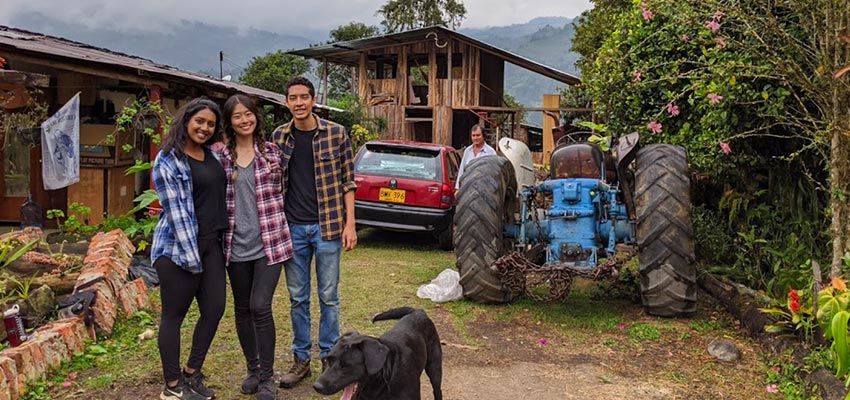
On our final evening on the farm, we had a talent show, where Juaco ate fire and children showed off their creative sides. We played games with the kids in the dark, running around the farm, pretending to be wolves until we were too tired to continue. We ended the night dancing, with community members sharing their Salsa skills with us.
When returned to Bogota, we took part in traditional tourist activities such as hiking Monserrate, dancing, and walking through various neighborhoods. We had so much fun during our time in Colombia and are forever grateful for the experience and the incredible people we met. Thank you to our trip leaders, Juli, Nata, and Juaco for an unforgettable experience!
About the authors
This group consisted of three MIT D-Lab students: Sridevi Kaza ‘21, Pedro Leandro La Rotta ‘21, and Athena Zhang ‘20. Sridevi Kaza studies Mechanical Engineering and Computer Science at MIT. Pedro Leandro La Rotta studies Biological Engineering at MIT. Athena Zhang studies Economics and Music at Wellesley.
More information
MIT D-Lab class: D-Lab: Development
Contact
Libby Hsu, MIT D-Lab Lecturer and Academics Program Manager

